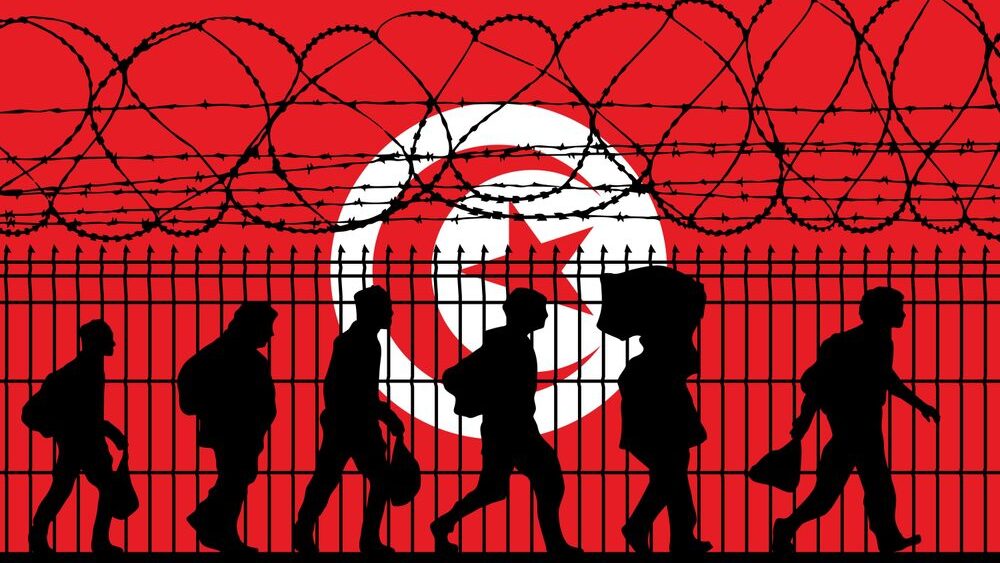The Tunisian government has allegedly been using buses to move illegal migrants from the city of Sfax to the port of Al Amra, which is known as a hub for illegal boat departures to Italy, as some have questioned whether Tunisia is pushing them toward Europe.
The operation has largely been directed at moving sub-Saharan African migrants living on the streets of Sfax, the second-largest city in the country, and hundreds of migrants have been moved from the city so far, Le Monde reports.
Romdhane Ben Amor, spokesman for the Tunisian Forum for Economic and Social Rights (FTDES), commented on the moving of the migrants, saying, “It looks like they’re pushing them to leave when they can’t even afford to pay for their crossing. We lead them to death.”
Earlier this year, in July, a Tunisian man was killed by a sub-Saharan African migrant, causing outrage in the country, and it led to hundreds of migrants being evacuated from Sfax and sent to the desert areas along the country’s border with Algeria and Libya, leading to 25 people dying.
Activist Wahid Dahech commented on the government changing the destination of the evacuated migrants since then, saying, “There are hundreds of migrants who were already here in Al-Amra since what happened in July; they stay there for days or even weeks before embarking; it is one of the main departure areas in the region.”
The alleged Tunisian move comes despite talks made between the country’s government, Italy, and the European Union in order to come to an agreement to reduce or halt the surging number of illegal immigrants departing from Tunisia.
As part of the new migration pact, the European Union has paid 127 million euros to Tunisia, at least half of which is meant to combat people traffickers.
A report from the German newspaper Die Welt states that the cash is expected to be paid in the coming days, quoting European Commission spokesman Ana Pisonero, who spoke on Friday, September 21st.
According to Pisonero, the goal of the pact is “close cooperation between the EU and Tunisia and a crackdown on illegal smuggling networks.”
The pact stems from meetings in July involving European Commission President Ursula von der Leyen and Italian Prime Minister Giorgia Meloni, who spearheaded the talks.
The Memorandum of Understanding that resulted from the talks looks to send cash to Tunisia in order to improve the country’s economic development and reduce illegal immigrant numbers.
At the time, Prime Minister Meloni hailed the agreement as a triumph, saying, “We have achieved a very important goal which comes after a great deal of diplomatic work. The Memorandum is an important step towards creating a real partnership between the EU and Tunisia.”
Tunisian President Kais Saied also spoke highly of the agreement, saying, “I have to thank you all, and in particular Prime Minister Meloni, for having responded immediately to the Tunisian initiative to organize a summit for all the countries concerned. Because the solution to this inhuman situation can only be common and, in particular, to address the causes before the effects.”
However, if the Tunisian government is pushing migrants from Sfax to the port of Al Amra, the deal may face criticism on top of existing pushback from leftist groups who deem the deal inhumane.
Al Amra is one of the main departure points for migrants who attempt to reach the Italian island of Lampedusa, which saw record numbers of arrivals earlier this month with the number of migrants on the island surpassing the population of just over 6,000 people, leading some to describe the situation as an “invasion” as reports claimed that as many as 10,000 illegals were present on the island.
Following the surge of arrivals in Lampedusa, the European Union border agency Frontex has announced that it will increase the number of flight hours of its aircraft that monitor the central Mediterranean to spot illegal boats.
“We are actively collaborating with Italian authorities and stand ready to bolster our support. This is not just an Italian challenge but a collective one for Europe. Together, we embrace the shared responsibility of safeguarding the EU’s external borders,” Frontex Executive Director Hans Leijtens said.
According to Frontex, the Central Mediterranean migrant route to Italy accounts for around half of all of the illegal entries to Europe and has already surpassed 114,000 illegal arrivals in just the first eight months of the year, the largest number since 2016.






